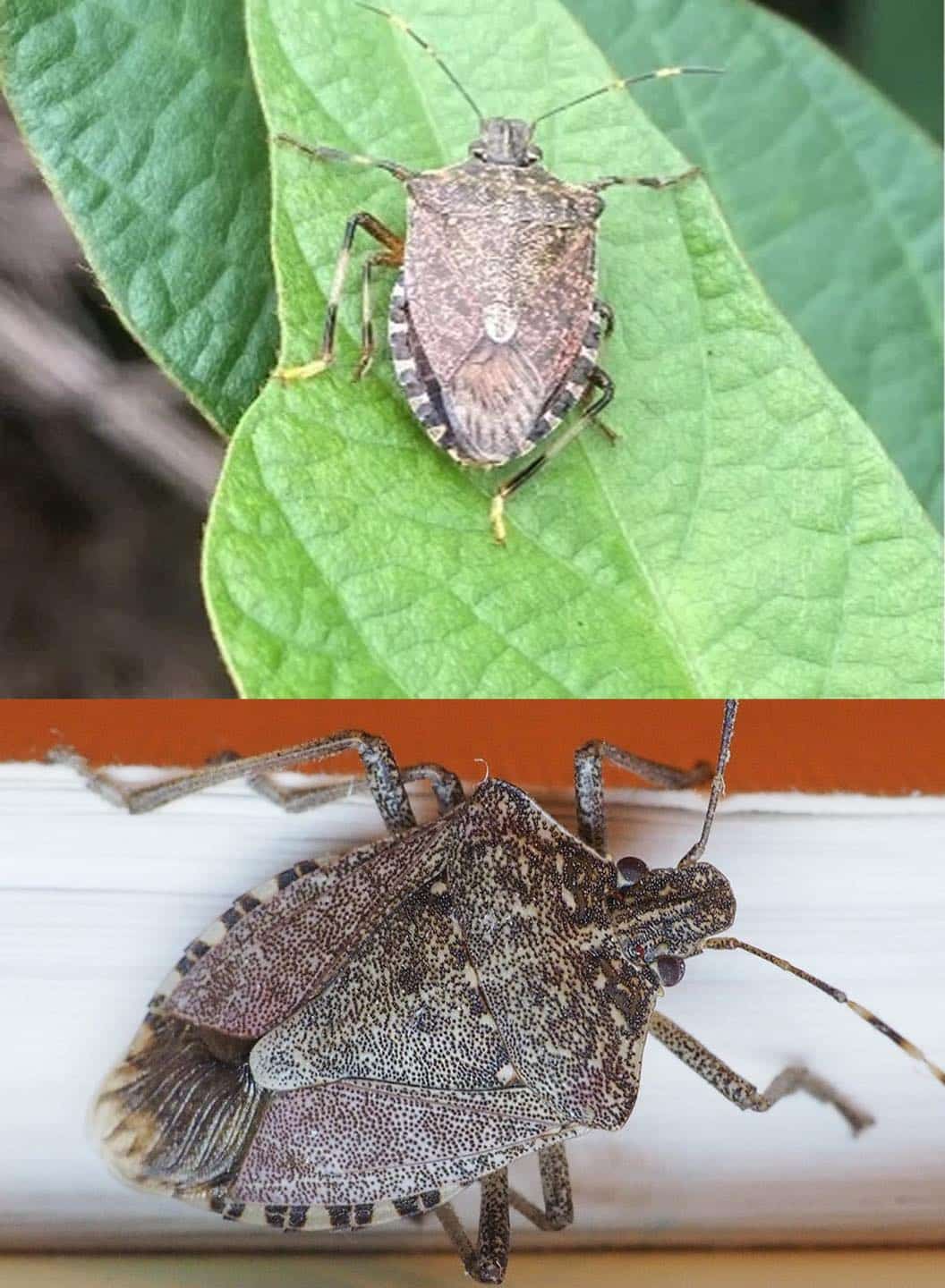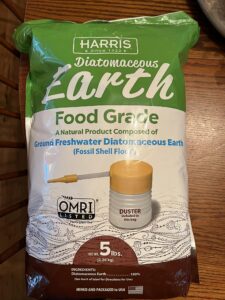Stink bugs: nature’s little aromatic intruders. Although harmless to humans, you don’t want these tiny pests in your home. Why, you ask? First, they can quickly turn your cozy home or flourishing garden into a pungent-smelling place.
Secondly, they can puncture the tissues of your plants, especially tomatoes, peppers, apples, berries, beans, and squash and suck out the juices. This feeding can result in discolored, wilted, or misshapen fruits, vegetables, and ornamental plants.
It’s in your best interests to eliminate stink bugs, so let’s explore the best strategies for getting that done.
14 Ways To Get Rid Of Stink Bugs From Your Home And Garden
Stink bugs will invade your home for many reasons, including seeking shelter from changing weather conditions. Keeping these annoying bugs out involves addressing what attracts them to your home and access points.
Prevention
1. Seal Entry Points
If stink bugs do not have a way to access your home, they cannot find their way inside. In that case, inspect the exterior of your home for any gaps or cracks in walls, windows, doors, and foundations. Seal gaps around windows and doors with weather stripping or caulking and replace damaged or missing seals.
You should also patch up any holes in window screens and ensure they fit snugly into the frame. Moreover, seal around utility pipes, vents, and cables with caulk or expanding foam.
Also, consider installing door sweeps at the base of exterior doors to prevent bugs from crawling underneath. You can also prevent stink bugs from finding their way inside your home through windows, doors, or vents by installing mesh screens with fine mesh on them.
2. Change Outdoor Lighting
Stink bugs are drawn to certain types of light, especially white lights or those with a high UV component. Therefore, if you have these kinds of outdoor lighting, consider changing it.
Replace white or mercury vapor lights with yellow or sodium vapor bulbs. Stink bugs are less attracted to these colors since they emit light wavelengths that they find less appealing. You can also opt for LED lights that emit warmer hues instead of cool white or bright blue lights.
Apart from picking the proper outdoor lighting, position them correctly. Install outdoor lights away from entry points like doors and windows. Also, consider using motion-activated lights instead of keeping outdoor lights on throughout the night.
If possible, minimize the duration of light exposure by setting timers for outdoor lights. Moreover, install dimmer switches for outdoor lights to make them less appealing to stink bugs.
3. Clean Garden Debris
Your garden debris, such as fallen leaves, mulch, weeds, and decaying plants, offers stink bugs excellent hiding spots. These bugs also tend to lay eggs on plant debris. Fortunately, this issue has an easy fix.
Schedule regular garden cleanups entailing raking leaves, removing dead plants, trimming overgrown vegetation, and clearing away any debris. In addition, use a thinner mulch layer, remove weeds regularly, and bag and remove garden debris from your property.
Also, avoid accidentally transporting stink bugs from one area to another by cleaning your gardening tools.
Read More:
- How To Get Rid Of Slugs And Snails In Garden Naturally
- How To Get Rid Of Centipedes In House
- How To Get Rid Of Asian Beetles In The House
4. Remove Vegetation
Stink bugs not only consume the vegetation in your garden but also use it as shelter. In addition, the overgrown vegetation close to your home can act as a bridge for stink bugs to easily access your indoor spaces.
So, regularly trim trees, shrubs, and plants, especially those in close proximity to your home. Additionally, create a buffer zone by clearing vegetation at least a foot or more away from your home’s foundation.
I recommend establishing a routine for trimming, pruning, and maintaining your garden to prevent overgrowth.
Natural Remedies to Get Rid of Stink Bugs
5. Vacuuming
Physically remove the stink bugs that have already made it inside your house with a vacuum. If your vacuum is bagless, consider dedicating a specific attachment or section for stink bug removal to avoid contaminating the whole unit.
Use a long hose or extension to remove stink bugs in hard-to-reach places. Regularly vacuum areas where they tend to accumulate, such as around windows, doors, and other entry points, to prevent stink bugs from returning.
6. Apply Diatomaceous Earth (DE)
This fine powder is an excellent natural method of killing stink bugs. It also works on many other insects, making it exceptionally helpful. Dust plants in your garden lightly with DE, especially on the stems and leaves where stink bugs tend to gather.
In addition, sprinkle DE on entry points such as windowsills, doorways, and any cracks or crevices.
7. Try Essential Oils
Some essential oils that effectively repel stink bugs include peppermint, eucalyptus, citronella, lavender, and tea tree oil. Dilute the essential oil of your choice with water, then spray the bugs’ entry points.
Also, use oil diffusers with these scents to deter stink bugs from entering your living spaces. To make a more potent deterrent, combine essential oils with other natural repellents, like vinegar or dish soap.
8. Garlic and Pepper Spray
Prepare a garlic and pepper spray, then apply it on your garden plants and your house’s entry points.
Ingredients
- 2 cups of water
- 4 cloves of garlic
- 2 tablespoons of crushed red pepper flakes
Instructions
- Crush or mince the garlic cloves and place them in a pot with 2 cups of water.
- Add the crushed red pepper flakes to the pot, bring the mixture to a boil, and let it simmer for about 20 minutes.
- Allow the mixture to cool, then strain it to remove the garlic and pepper residue.
- Transfer the strained liquid into a spray bottle.
9. Trap Them
Reduce the population of stink bugs in your garden and home by trapping them with light traps, sticky traps, or DIY traps. This method keeps them from breeding and multiplying in your space.
Light Trap: Fill a shallow pan or bowl with soapy water, then place a desk lamp or a light source above the water-filled container. Light will draw them in, then fall into the soapy water, where they’ll drown.
Sticky Traps: If stink bugs come in contact with the sticky surface, they get stuck and won’t be able to escape.
DIY Trap: Cut off the top part of a plastic bottle, invert the top part into the bottom half to create a funnel-like entrance, and then secure the pieces with tape or glue. Place a light source near the trap to attract the stink bugs. Coat the funnel’s interior and bottom part with a thin layer of vegetable oil or soapy water to prevent the captured bugs from climbing out.
10. Pick Them By Hand
Consider just picking the stink bugs off when dealing with a small infestation. This method is effective and the cheapest, too. Wear gloves before touching these bugs because they can emit an unpleasant odor when handled.
Furthermore, handle them gently since they can release the stinky odor when squished. It is easier to catch stink bugs in the morning when temperatures are cooler because they are sluggish during these hours.
Approach stink bugs slowly and steadily to avoid startling them and causing them to fly away or emit their odor.
Chemical Solutions
11. Insecticides
Due to the potential health and environmental risks of chemicals, use insecticides cautiously, sparingly, and as a last resort. Select an insecticide labeled specifically for stink bugs.
Garden Remedies
12. Row Covers
Before stink bug season begins, place the row covers over susceptible plants, anchoring the covers to the ground to prevent bugs from crawling underneath. The best time to use row covers is when the stink bug populations are at their peak, typically in spring and fall.
When your plants’ blooming season comes, remove the covers if your plants require pollination by insects. When removing them, do it gradually, especially if the weather is still conducive to stink bug activity.
13. Plant Trap Crops
Lure stink bugs away from the plants you wish to protect from them or your main garden with plants these pests find attractive. These include sunflowers, millet, mustard greens, and legumes.
Plant these crops around the perimeter of your garden or at a distance where they can divert stink bugs away from your prized plants. Once the trap crops have attracted many stink bugs, remove or destroy the infested plants, thereby reducing the stink bug population in that area.
If possible, replant trap crops throughout the growing season to keep attracting and trapping stink bugs.
14. Attract Beneficial Insects
Recruit beneficial insects to help in your fight against stink bugs. Insects that prey on stink bugs include spiders, praying mantis, wasps, like the spined soldier bug and tachinid fly, ladybirds, and bird species, such as purple martins and certain sparrows.
Grow a variety of plants, including flowers that bloom at various times of the year, to attract different beneficial insects. Additionally, develop habitats like brush piles, rock piles, and untrimmed vegetation to offer shelter and nesting sites for beneficial insects.
Final Remarks
Considering that stink bugs are usually an issue for a minimum of half the year, sometimes even longer, knowing how to deal with them is pretty useful. For the best results and total stink bug eradication, be consistent and consider combining various methods. Aim to prevent these pesky bugs from entering your home and garden in the first place.

I’m Mike Hyle, an exterminator with 7+ years of experience handling all sorts of pests, including mice, cockroaches, bed bugs, and termites. I also write for Pest Solutions DIY blog to share my knowledge and help homeowners keep their homes pest-free. Outside work, I enjoy hunting, snowshoeing, and exploring nature. Check out my blog for helpful pest control tips!


